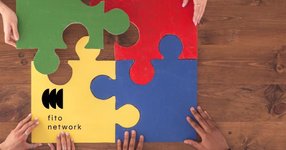Compassionate Collaboration 🤝
Thoughts on team-work, governance and prosocial collaboration
Compassionate Collaboration 🤝
Thoughts on team-work, governance and prosocial collaboration
Why Who How Where What When


“Selfishness beats altruism within groups. Altruistic groups beat selfish groups. Everything else is commentary.”
—Edward O. Wilson
What it takes to grab the biggest slice of the pie is different than what it takes to make the biggest pie. This is, quite literally, the fundamental problem of human social life, and it is just as true for an individual in a team as it is for a nation-state arguing that it should be allowed to release more carbon than other nations.
We need to construct conditions in which altruism can thrive.
What's in it for me → What's in it for us? Eco-system!
The three Cs of human distinctiveness:
Cooperation. First, we easily cooperate with others who are genetically unrelated to us and are by far the most cooperative primate.
Cognition. Second, our cognition is different, especially our capacity for symbolic thought and relational learning.
Culture. And, third, we culturally transmit more learned behavioral information across generations than other species.


There are 6 Key Patterns -which are based on what we have observed so far in collaborative innovation:
Diverging & Converging
Checking Back
Leveraging Tensions
Design Squiggle
Working Concurrently
Spiralling
The Leveraging Tensions pattern involves recognizing and embracing the creative tension between seemingly opposing values, referred to as "polarities." This tension is essential for breakthroughs and for bringing something new to life. Examples like Action and Analysis illustrate the need for balance in these polarities.
Acknowledging creative tensions is crucial for the collaboration, and avoiding conflicts or seeking to bypass tensions can hinder deeper learning, trust-building, and breakthrough ideas. It is important to address the discomfort associated with tensions, there is a missed opportunities for progress when tensions are not leveraged well.
Facilitating collaborative sessions with creative tensions requires framing them as natural and positive. Proactively naming specific value-pairs and helping stakeholders understand the benefits of each tension are practical tips.